Learn
Light Waves
There is a section of the spectrum that is labeled visible light. This represents the section of the spectrum that our eyes can actually perceive. Let's examine this portion even closer.
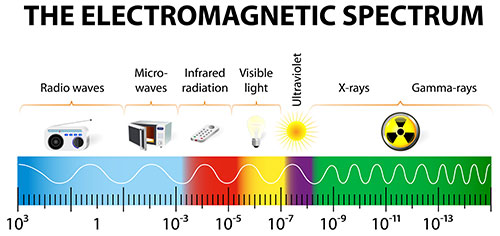
The visible light we can see is made up of distinct colors — red, orange, yellow, green, blue, indigo, and violet. This is sometimes referred to as ROY G BIV. Notice that each color has a range of specific wavelengths. If a wave of light falls within that range, we see that specific color.
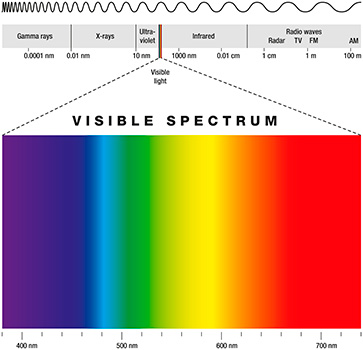
See larger version of visible light spectrum here.
When light hits something (usually referred to as a medium or media), that light can do three different things.
- It can be absorbed.
- It can be transmitted.
- It can be reflected.

When light is absorbed by a material, it means that the wave of light is unable to pass through the material.
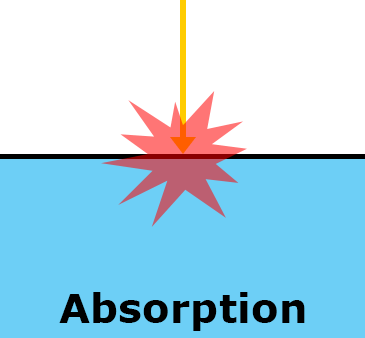
When light is transmitted by a material, it means that the wave of light is allowed to pass through the material.

When light is reflected by a material, it means that the wave of light is bounced back off the material.

Hopefully, your next question is how do we know if a wave of light will be absorbed unable to pass through , transmitted able to pass through , or reflected bounced back ?
Whether a wave of light is absorbed, transmitted, or reflected depends in large part of the type of media (plural of medium) that the light wave hits. Remember, a medium is simply something a wave travels through or in this case has the possibility to travel through.
Although media differ and the exact properties of light effect exactly how a light will behave in a medium, I bet you are able to predict pretty well what will happen when light strikes each of the following media.
Look at the pictures below and think about whether a wave of light hitting the object would be reflected, transmitted, or absorbed. Review each picture below and then review the answer.
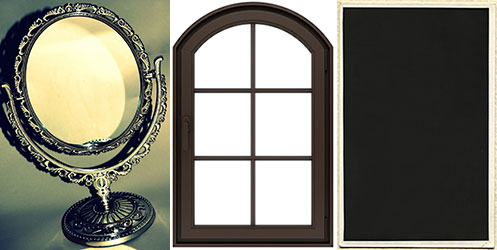
Answer: The mirror reflects the light, the window transmit the light, and the black paper absorbs the light.
Finally, it is important to remember that one material may be able to do all three (absorption, transmission, and reflection) at one time just with different wavelengths (colors) of light. In fact , this is where the colors we see come from.
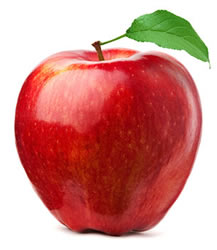
Think of a red apple. When white light (for example, sunlight) hits the apple, the red wavelength of light is reflected back towards our eye, causing us to see red. The other colors (OYGBIV) are absorbed by the apple so we don't see them again!

See larger version of diagram of reflected light here.
Open the Light Waves: Reflection and Refraction lesson to review some of the concepts we have been discussing. PBS login information. You only need to read pages 7 and 8, though you can review the whole lesson if you like. Pay close attention to the explanations given for absorption, reflection, and refraction. Reading and seeing this information presented in a new way may help you grasp the information even better and prepare you for constructing your own explanation!